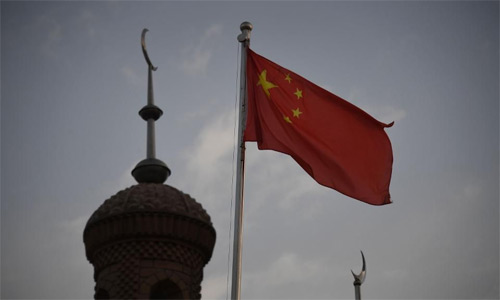Tensions between China and the United States have escalated after the House of Representative’s Uighur Human Rights Policy Act, 2019. International media and human rights organizations claim that China is persecuting the Uighur community and violating their human rights and religious beliefs, allegations that Beijing has denied. Calling the US action a political move aimed at damaging its international image, China states it is running a de-radicalization program to mainstream its communities.
Chinese officials say that they are countering violent extremism (CVE), including “separatists, religious extremists, and terrorists”, who refer to Xinjiang as “East Turkistan”. The Chinese State Council Information Office issued a booklet in July this year saying that never in Chinese history has Xinjiang been referred to as ‘East Turkistan’ and there has never been any state with this name. According to the booklet, at the turn of the 20th century, terms such as ‘Pan-Turkism’ and ‘Pan-Islamism’ “made inroads in Xinjiang” and “separatists in and outside China politicized the geographical concept and manipulated its meaning, inciting all ethnic groups speaking Turkic languages… to join in creating the theocratic state of East Turkistan”.
Another booklet issued in March said that religious extremists inherited “the so-called theories of ‘Pan-Turkistan’ and ‘Pan-Islamism’ created by former colonialists”.
Since the strategy of China’s counter-terrorism is being challenged by international media, China is worried about its global image. In April, China invited a media delegation from different countries in Xinjiang, where t v delegation visited Wensu County Vocational Skills Training Center and Moyu Vocational Skills Education and Training Center in Aksu. The journalists interviewed some of the students learning there. In their interviews, the students, who were Uighur Muslims, said that they were radicalized through unknown messages sent through WeChat, a Chinese social media app. We also visited the residences of some Uighur Muslims who were graduated from vocational skills training centers. They expressed their happiness and said that they were recruited in companies or launched their own business after graduation.
Law, skills, and Chinese Language are in the syllabus of vocational skills training centers. The students, who graduate from the centers, will be familiarized with Chinese Law and learn skills for having good income.
We also visited an Islamic Institute, where students could speak Arabic and recite Holy Quran. The institute was equipped with modern facilities with a mosque in the courtyard and having a long corridor for taking ablution. Students received monthly payment from the government. In the institute, a lecturer said that they followed “the principle that Islam should be adopted to the Chinese national conditions” and “Islam should be in line with the socialism of Chinese characteristics”.
We also visited a Museum, where terrorist events were displayed that happened in Xinjiang as well as video clips showing members of ISIL group slaughtering and shooting civilians.
Chinese Ambassador to Kabul Mr. Wang Yu said in a press conference this month that Xinjiang was not about ethnicity or religion but about combating extremism, terrorism and separatism. He said that to protect ordinary people, China had been cracking down on violent terrorist networks and opened vocational education and training centers to educate people affected by extremist ideology with a minor tendency to commit crimes, rectify their extremist ideas, teach them vocational skills for free and enable them to find a job and make a living. He added that the measure “has produced very good results”.
He slammed the US and other western countries for “interfering with China in the name of human rights”.
The Chinese narrative is that it is fighting against religious extremists, terrorists and separatists in accordance with national laws and international instruments, including the United Nations Charter.
In addition to the establishment of education and training centers, China is seeking to mitigate the challenges through economic empowerment, mainly in Xinjiang which is the hub area of the Silk Road Economic Belt, within the framework of the Belt and Road Initiative. Xinjiang has, indeed, maintained social stability, achieved economic growth and improved lives for the people.
It is said that Xinjiang’s per capita disposable income of urban and rural residents increased 101-fold and 99-fold respectively since 1978. Tourism has become an important drive in high-quality economic development of Xinjiang. Last year, over 150 million people reportedly visited Xinjiang, with an increase of 40 percent.
There are reportedly “25,000 places for religious activities, including 24,400 mosques. On average, there is one mosque for every 530 Muslims”.
Home » Opinion » China’s Narrative of Xinjiang Issue
China’s Narrative of Xinjiang Issue
| Hujjatullah Zia

